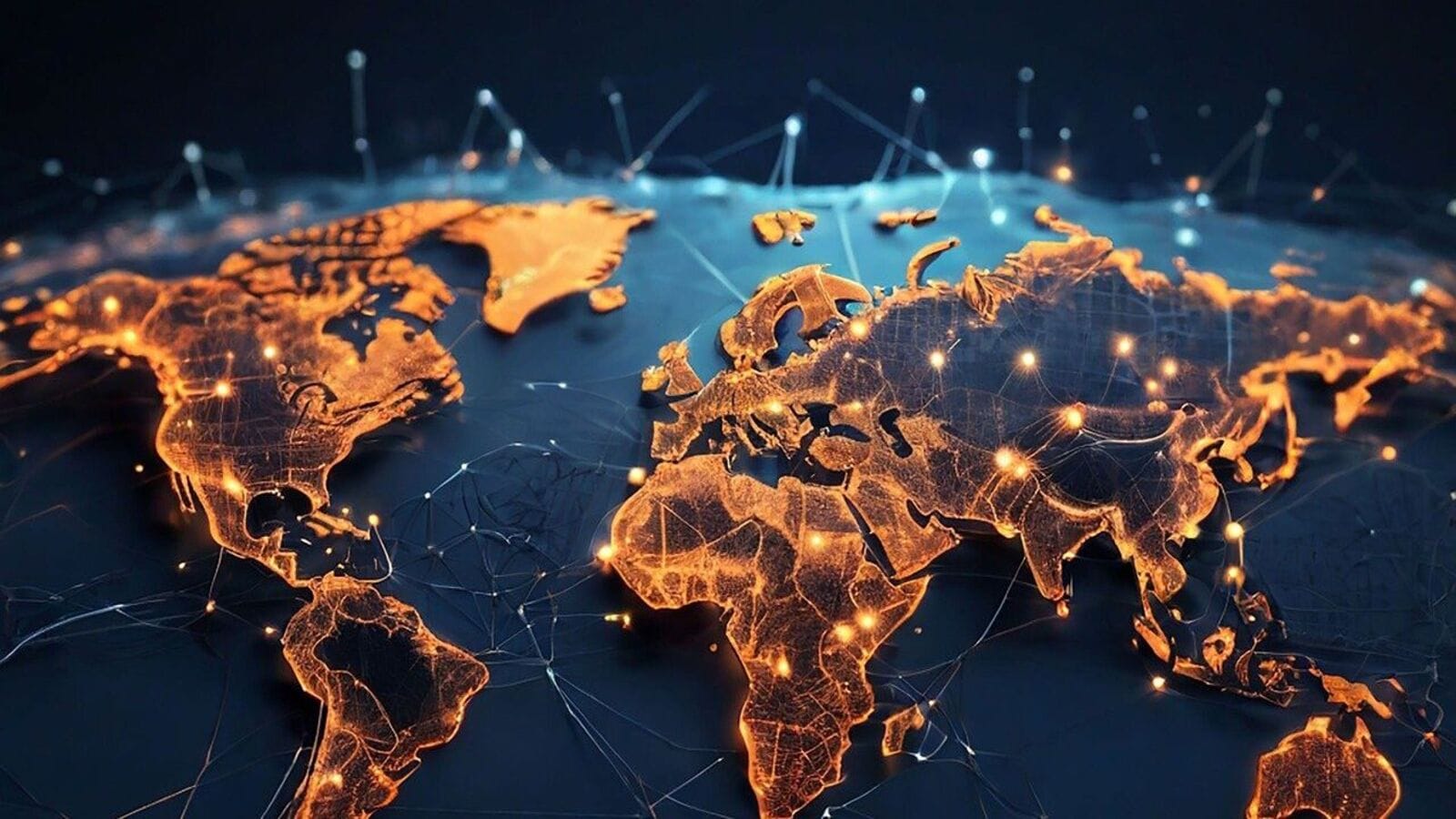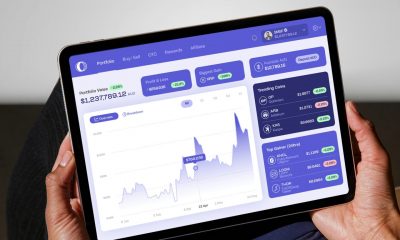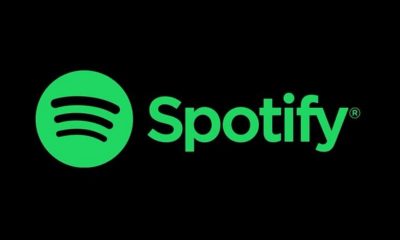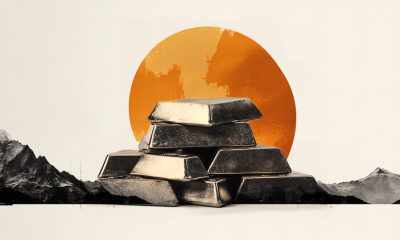

Metaverse
Artificial intelligence is helping improve climate models – Crypto News
No model is perfect. Those modelling climate trends and impacts are forced to exclude many things, either because the underlying scientific processes are not yet understood or because representing them is too computationally costly. This results in significant uncertainty in the results of simulations, which comes with real-world consequences. Delegates’ main fight in Baku, for example, will be over how much money poor countries should be given to help them decarbonise, adapt or recover. The amount needed for adaptation and recovery depends on factors such as sea-level rise and seasonal variation that climate modellers still struggle to predict with much certainty. As negotiations become ever more specific, more accurate projections will be increasingly important.
The models that carry most weight in such discussions are those run as part of the Coupled Model Intercomparison Project (CMIP), an initiative which co-ordinates over 100 models produced by roughly 50 teams of climate scientists from around the world. All of them attempt to tackle the problem in the same way: splitting up the world and its atmosphere into a grid of cells, before using equations representing physical processes to estimate what the conditions in each cell might be and how they might change over time.
When CMIP started in 1995, most models used cells that were hundreds of kilometres wide—meaning they could make useful predictions about what might happen to a continent, but not necessarily to individual countries. Halving the size of cells requires roughly ten times more computing power; today’s models, thousands of times more powerful, can simulate cells of around 50km per side.
Clever computational tricks can make them more detailed still. They have also grown better at representing the elaborate interactions at play between the atmosphere, oceans and land—such as how heat flows through ocean eddies or how soil moisture changes alongside temperature. But many of the most complex systems remain elusive. Clouds, for example, pose a serious problem, both because they are too small to be captured in 50km cells and because even small changes in their behaviour can lead to big differences in projected levels of warming.
Better data will help. But a more immediate way to improve the climate models is to use artificial intelligence (AI). Model-makers in this field have begun asserting boldly that they will soon be able to overcome some of the resolution and data problems faced by conventional climate models and get results more quickly, too.
Engineers from Google have been among the most bullish. NeuralGCM, the company’s leading AI weather and climate model, has been trained on 40 years of weather data and has already proved itself to be as good at forecasting the weather as the models for and by which these data were originally compiled. In a paper published in Nature in July, Google claimed its model will soon be able to make projections over longer timescales faster, and using less power, than existing climate models. With additional training, the researchers also reckon NeuralGCM will be able to offer more certainty in important areas like shifts in monsoons and tropical cyclones.
This optimism, say the researchers, comes from the unique abilities of machine-learning tools. Where existing models sidestep intractable physics problems by using approximation, NeuralGCM’s creators claim it can be guided by spotting patterns in historical data and observations. These claims sound impressive, but are yet to be evaluated. In a preprint posted online in October, a team of modellers from the Lawrence Livermore National Laboratory in California noted that NeuralGCM will remain limited until it incorporates more of the physics at play on land.
Others are more sceptical that AI methods used in short-term weather forecasting can be successfully applied to the climate. “Weather and climate are both based on physics,” says Gavin Schmidt, a climate scientist who runs NASA’s Goddard Institute for Space Studies, but pose different modelling challenges. For one thing, the available data are rarely of the same quality. For weather forecasting, huge swathes of excellent data are generated every day and, therefore, able to continuously validate the previous day’s predictions. Climate models do not enjoy the same luxury. In addition, they face the challenge of simulating conditions more extreme than any previously observed, and over centuries rather than days.
AI can nonetheless help improve climate models by addressing another major source of uncertainty: human behaviour. Until now, this has been overcome by codifying different social and political choices into sets of fixed scenarios which can each then be modelled. This method makes evaluations possible, but is inflexible and often vague. With the help of AI, existing tools known as emulators can customise conventional models to suit their end users’ needs. Such emulators are now used by cities planning infrastructure projects, by insurers assessing risk and by agricultural firms estimating changes in crop yields.
Unlike models such as Google’s NeuralGCM, which is trained on the same weather data as today’s top climate models, emulators are typically trained on the outputs of full-scale climate models. This allows them to piggyback on improvements to the models themselves—both the new physics they are able to model and the ways in which they extrapolate beyond historical data. One such emulator, developed by the Commonwealth Scientific Industrial Research Organisation in Australia in 2023, for example, was capable of adjusting predictions linked to future emissions levels one million times faster than the model it was trained on.
Reducing the uncertainties in climate models and, perhaps more important, making them more widely available, will hone their usefulness for those tasked with the complex challenge of dealing with climate change. And that will, hopefully, mean a better response.
© 2025, The Economist Newspaper Ltd. All rights reserved. From The Economist, published under licence. The original content can be found on www.economist.com
-

 Technology6 days ago
Technology6 days agoMeet Matt Deitke: 24-year-old AI whiz lured by Mark Zuckerberg with whopping $250 million offer – Crypto News
-

 Cryptocurrency7 days ago
Cryptocurrency7 days agoXRP inflows drop 95% since July spike, while Chaikin data signals possible rally – Crypto News
-

 Blockchain6 days ago
Blockchain6 days agoBank of America Sees Interest in Tokenization of Real-World Assets – Crypto News
-

 Technology1 week ago
Technology1 week agoIs AI causing tech worker layoffs? Thats what CEOs suggest, but the reality is complicated – Crypto News
-
others7 days ago
Breaking: Strategy Files $4.2 Billion STRC Offering To Buy More Bitcoin – Crypto News
-
others7 days ago
XRP NIGHT Token Airdrop: Snapshot, Claim Date and What to Expect? – Crypto News
-

 Blockchain1 week ago
Blockchain1 week agoSEC Crypto ETFs Ruling Brings Structural Fix, Not Retail Shakeup – Crypto News
-
Business1 week ago
Breaking: Solana ETFs Near Launch as Issuers Update S-1s With Fund Fees – Crypto News
-

 Blockchain5 days ago
Blockchain5 days agoAltcoin Rally To Commence When These 2 Signals Activate – Details – Crypto News
-
Cryptocurrency5 days ago
Cardano’s NIGHT Airdrop to Hit 2.2M XRP Wallets — Find Out How Much You Can Get – Crypto News
-

 Business1 week ago
Business1 week agoChase Launches $4 Million Grant Program as Restaurants Struggle – Crypto News
-
others1 week ago
Ripple Swell 2025: Top Speakers and Panelists to Watch this November – Crypto News
-

 Technology7 days ago
Technology7 days agoOppo K13 Turbo series confirmed to launch in India with in-built fan technology: Price, specs and everything expected – Crypto News
-

 others1 week ago
others1 week agoBlockchain Gaming Is Growing Up – What’s Behind the Sector’s Quiet Comeback – Crypto News
-
Business1 week ago
Stablecoins Won’t Boost Treasury Demand, Peter Schiff Warns – Crypto News
-
Technology1 week ago
Coinbase to Offer Tokenized Stocks and Prediction Markets in U.S. – Crypto News
-

 others1 week ago
others1 week agoCanadian Dollar under pressure amid weak GDP, Trump tariff threat, and strong US data – Crypto News
-
Business6 days ago
Bitpanda Co-Founder & Co-CEO Paul Klanschek Steps Down as Firm Eyes Frankfurt IPO – Crypto News
-
Technology5 days ago
Beyond Billboards: Why Crypto’s Future Depends on Smarter Sports Sponsorships – Crypto News
-
others1 week ago
Breaking: PayPal to Let Merchants Accept Payments in Over 100 Cryptocurrencies – Crypto News
-

 Blockchain1 week ago
Blockchain1 week agoSEC Gives Green Light to In-Kind Transactions for Crypto ETPs – Crypto News
-

 Metaverse1 week ago
Metaverse1 week agoOpenAI rolls out ‘Study Mode’ in ChatGPT: What is it? How to use? All your questions answered… – Crypto News
-
Technology1 week ago
Breaking: BlackRock’s Ethereum ETF Staking Proposal Advances As SEC Acknowledges Filing – Crypto News
-
Technology1 week ago
Ethereum Price Prediction- Bulls Target $5,400 Amid DeFi Revival and Soaring TVL – Crypto News
-

 Technology1 week ago
Technology1 week agoCoinbase exchange targets alleged cybersquatter in lawsuit – Crypto News
-

 De-fi1 week ago
De-fi1 week agoWhite House Crypto Report Recommends Expanding CFTC’s Role in Crypto Regulation – Crypto News
-

 Technology6 days ago
Technology6 days agoBig Tech’s Big Bet on AI Driving $344 Billion in Spend This Year – Crypto News
-
Cryptocurrency6 days ago
CME XRP Futures Hit Record Highs in July Amid ETF Approval Optimism – Crypto News
-

 Cryptocurrency5 days ago
Cryptocurrency5 days agoStablecoins Are Finally Legal—Now Comes the Hard Part – Crypto News
-

 Cryptocurrency5 days ago
Cryptocurrency5 days agoTron Eyes 40% Surge as Whales Pile In – Crypto News
-

 Cryptocurrency5 days ago
Cryptocurrency5 days agoEthereum Hits Major 2025 Year Peak Despite Price Dropping to $3,500 – Crypto News
-

 Technology1 week ago
Technology1 week agoSpotify hits 276M subscribers and strong user growth in Q2, but revenue and profit fall short of targets – Crypto News
-

 Cryptocurrency1 week ago
Cryptocurrency1 week agoAltcoins update: Dogecoin and Injective signal recoveries as Ethereum eyes $4,000 – Crypto News
-
Business1 week ago
Breaking: CBOE Files For Rule Change To List Crypto ETFs Without SEC Approval – Crypto News
-

 Technology1 week ago
Technology1 week agoSolana DEX volume dips 20% after co-founder slams meme coins – Crypto News
-

 Technology1 week ago
Technology1 week agoTim Cook confirms Apple will ramp up AI spending, ‘open’ to acquisitions – Crypto News
-

 Technology7 days ago
Technology7 days agoOppo K13 Turbo series confirmed to launch in India with in-built fan technology: Price, specs and everything expected – Crypto News
-

 Blockchain6 days ago
Blockchain6 days agoStrategy Expands STRC Offering Twice in One Week – Crypto News
-
Technology5 days ago
Will The First Spot XRP ETF Launch This Month? SEC Provides Update On Grayscale’s Fund – Crypto News
-

 Technology5 days ago
Technology5 days agoAmazon Great Freedom Sale deals on smartwatches: Up to 70% off on Samsung, Apple and more – Crypto News
-

 Blockchain5 days ago
Blockchain5 days agoXRP Must Hold $2.65 Support Or Risk Major Breakdown – Analyst – Crypto News
-

 Blockchain5 days ago
Blockchain5 days agoXRP Must Hold $2.65 Support Or Risk Major Breakdown – Analyst – Crypto News
-
Business4 days ago
Is Quantum Computing A Threat for Bitcoin- Elon Musk Asks Grok – Crypto News
-

 Technology4 days ago
Technology4 days agoElon Musk reveals why AI won’t replace consultants anytime soon—and it’s not what you think – Crypto News
-

 Technology4 days ago
Technology4 days agoGoogle DeepMind CEO Demis Hassabis explains why AI could replace doctors but not nurses – Crypto News
-

 Cryptocurrency1 week ago
Cryptocurrency1 week agoCoinbase and JPMorgan Chase partner for crypto integration – Crypto News
-

 others1 week ago
others1 week agoGold slides below $3,300 as traders await Fed policy decision – Crypto News
-

 others1 week ago
others1 week agoGold slides below $3,300 as traders await Fed policy decision – Crypto News
-

 Technology1 week ago
Technology1 week agoNintendo Direct Partner showcase highlights third-party titles coming to Switch and Switch 2 – Crypto News
-
![WBC Elliott Wave analysis and Elliott Wave forecast [Video]](https://dripp.zone/news/wp-content/uploads/2025/01/WBC-Elliott-Wave-analysis-and-Elliott-Wave-forecast-Video-400x240.jpg)
![WBC Elliott Wave analysis and Elliott Wave forecast [Video]](https://dripp.zone/news/wp-content/uploads/2025/01/WBC-Elliott-Wave-analysis-and-Elliott-Wave-forecast-Video-80x80.jpg) others1 week ago
others1 week agoCan the record-breaking rally last? – Crypto News










